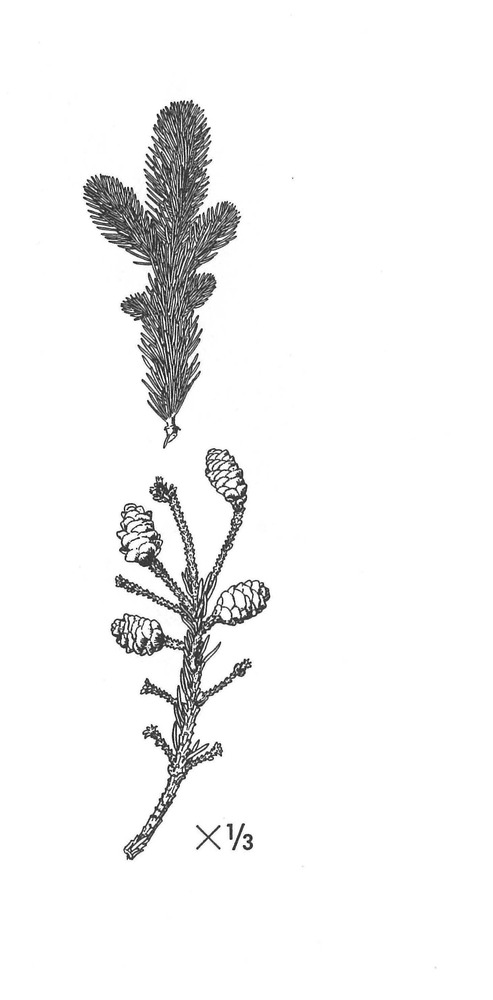| Picea glauca (Moench) Voss | |||
| |||
| Family | Pinaceae — APG family: Pinaceae | ||
| Synonyms | Picea canadensis, Pinus glauca Moench | ||
| Common name | white spruce | ||
| Description | Tree 10-25 meters tall and up to 50 cm in diameter, with stiff, pointed, 4-angled, blue-green needles, standing out in all directions, stomatiferous on all sides; branch- lets glabrous; deciduous cones subcylindrical, with thin, rounded, smooth-margined scales. | ||
| Ecology | The most important tree in the interior spruce-birch forest, extending to at least 1,500 meters, becoming stunted and depressed in lower alpine zone. Described from cultivated specimens; var. albertiana (next paragraph) described from Bankhead, Alberta. | ||
| Taxonomy notes | Two somewhat different types, with as yet unclear ranges and sometimes growing together, occur within range of interest: var. albertiana (S. Brown) Sarg. (P. al- bertiana S. Brown), narrowly pyramidal or linear in outline, with rough bark and cone scales wedge-shaped at base; and var. Porsildii Raup, conical or narrowly ovate in outline, with smooth bark beset with resin blisters, as on balsam fir, and more rounded cone scales. Typical P. glauca has broadly pyramidal form and occurs in central and eastern parts of range, with Alberta spruce (var. albertiana) replac- ing it from Keewatin and northern Saskatchewan west. On Alaskan map, approxi- mate extent of the P. glauca forest is indicated by hatching. (See color section.) |
This is a digital representation of Eric Hultén’s ‘Flora of Alaska and Neighboring Territories: A Manual of the Vascular Plants’, which was published by Stanford University Press in 1968. The book was digitized by C. Webb (at UAMN) as part of the Flora of Alaska project, with funding by the US NSF (Grant 1759964 to Ickert-Bond & Webb), and with permission of Stanford University Press. Data and images © 1968 Board of Trustees of the Leland Stanford Jr. Univ. Usage licence: Creative Commons BY-NC-SA 4.0. NB: You may find OCR errors; please refer to the hard-copy if in doubt.
